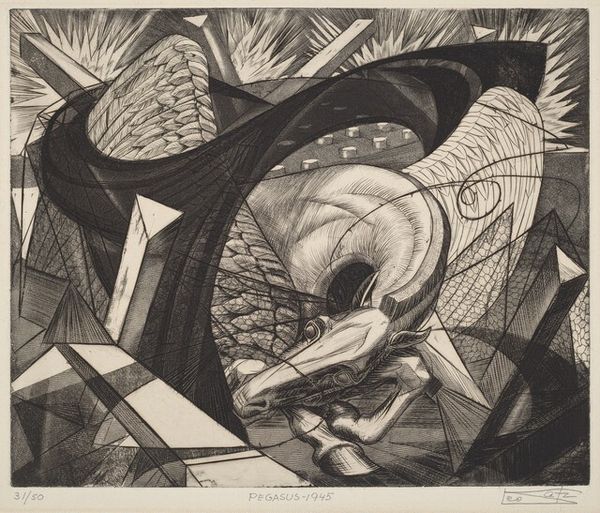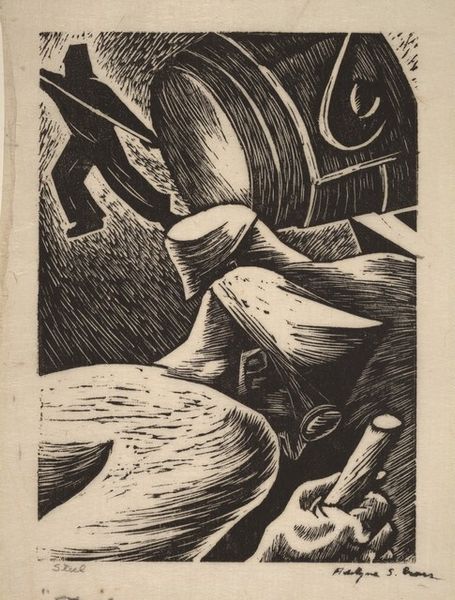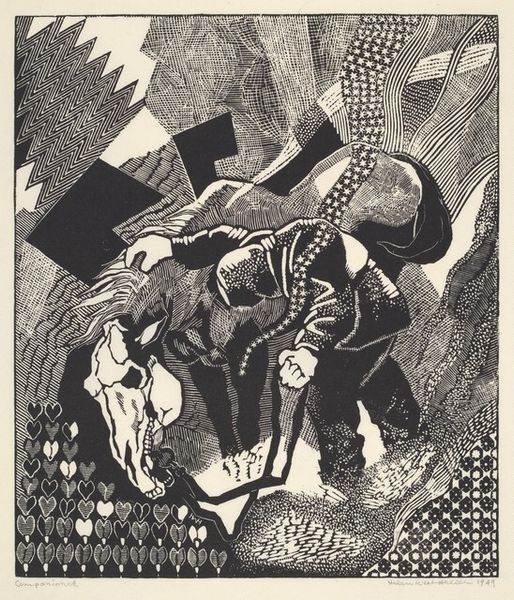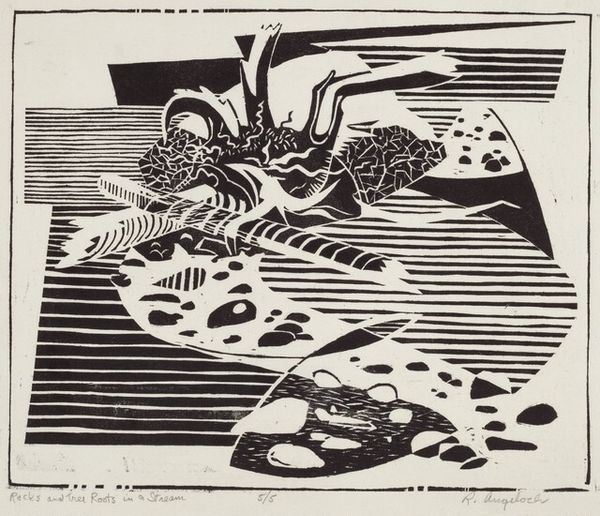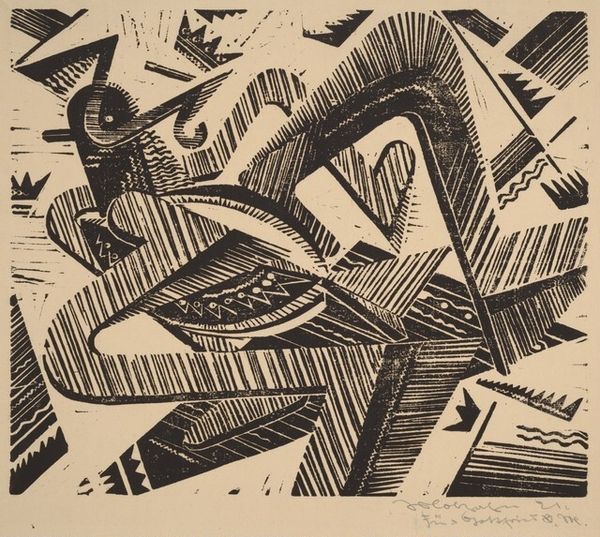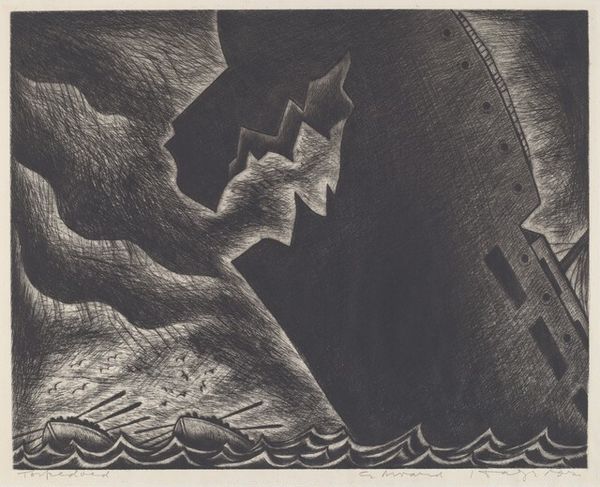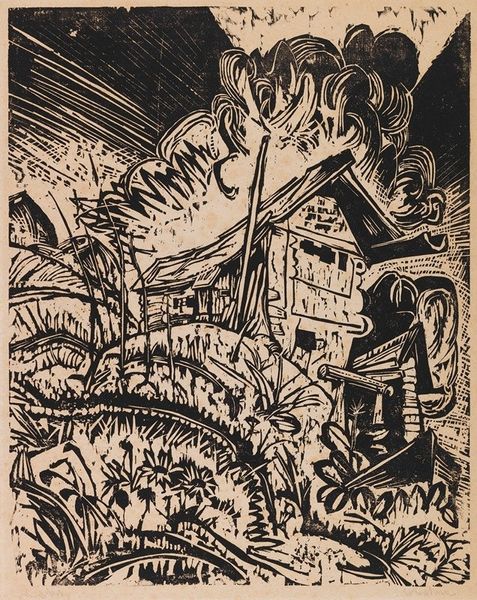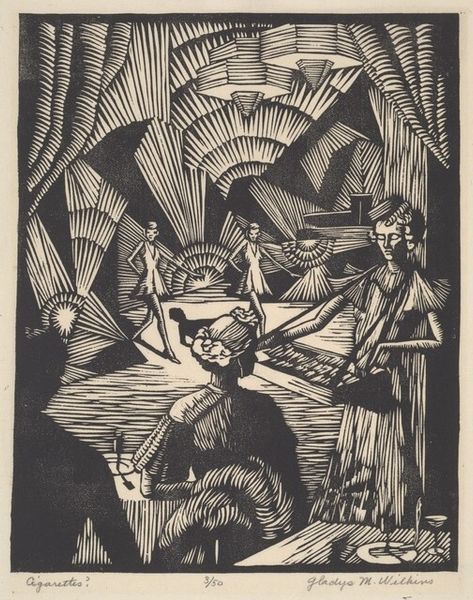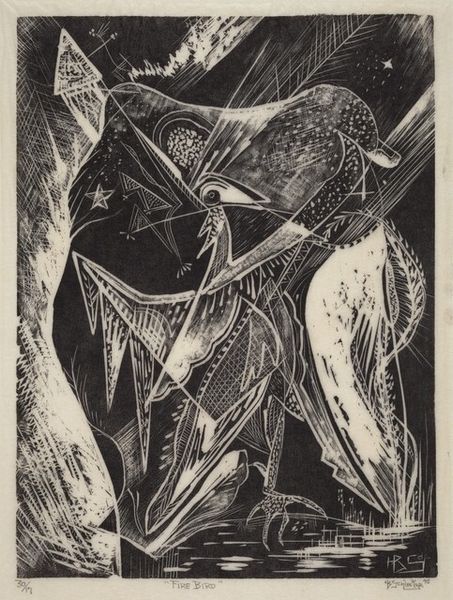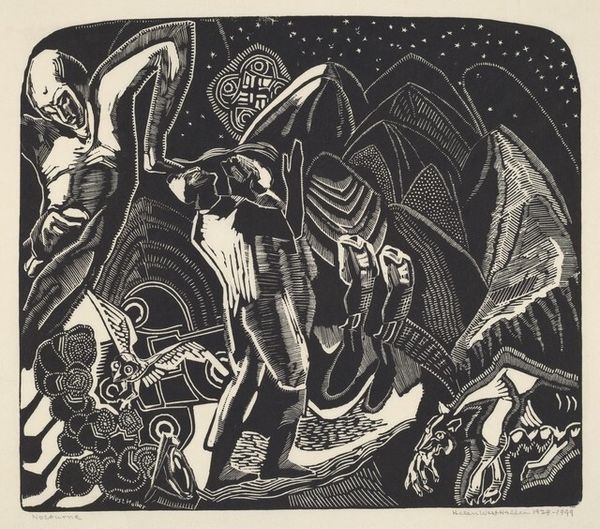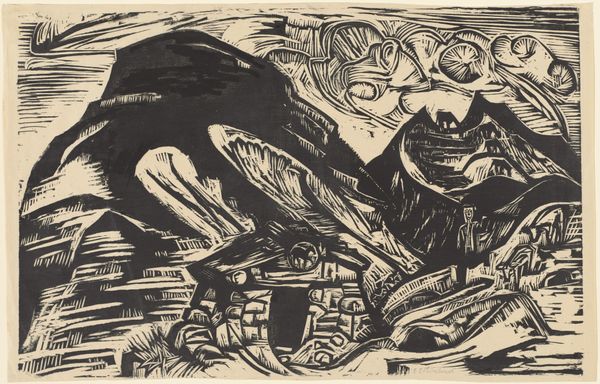
print, woodcut
#
abstract-expressionism
# print
#
landscape
#
woodcut
Dimensions: Image: 241 x 321 mm Sheet: 338 x 426 mm
Copyright: National Gallery of Art: CC0 1.0
Editor: This is Eli Jacobi's woodcut print, "D-Day," from 1951. It's intense, the sharp contrasts and chaotic composition almost overwhelming. What can you tell me about it? Curator: It’s important to understand this work through its materials. Consider the labor involved in carving this design into wood, and then transferring it onto paper through the printing process. The artist’s hand is undeniably present. Editor: I hadn't considered the sheer physical effort! So, are you suggesting the medium itself shapes the message? Curator: Precisely. Woodcut printing isn’t about delicate nuance. The stark black and white is bold, the image raw. The aggressive contrast between these two elements mirrors the brutal reality of war it suggests, no? The visual effect achieved through these materials adds an inescapable weight to the image. Editor: That's interesting! How does the historical context affect our reading? Curator: Think about the post-war context of its production in 1951. How were artists responding to the large-scale conflict? The accessibility of printmaking allowed artists like Jacobi to create impactful works cheaply and for wider circulation. It allows us to read “D-Day” not as propaganda, but perhaps more as commentary on consumption and remembrance? Editor: So, looking at it that way, this print challenges traditional ideas about art, making something important accessible, memorializing the event and speaking on an historical moment with available resources and materials. Thanks, I see it so differently now! Curator: Precisely! Analyzing artwork through its method and means reveals much!
Comments
No comments
Be the first to comment and join the conversation on the ultimate creative platform.
